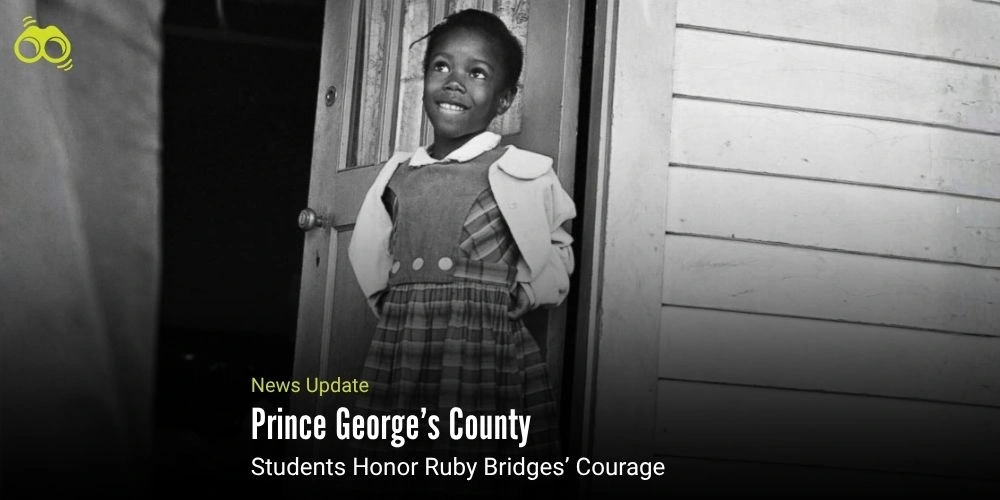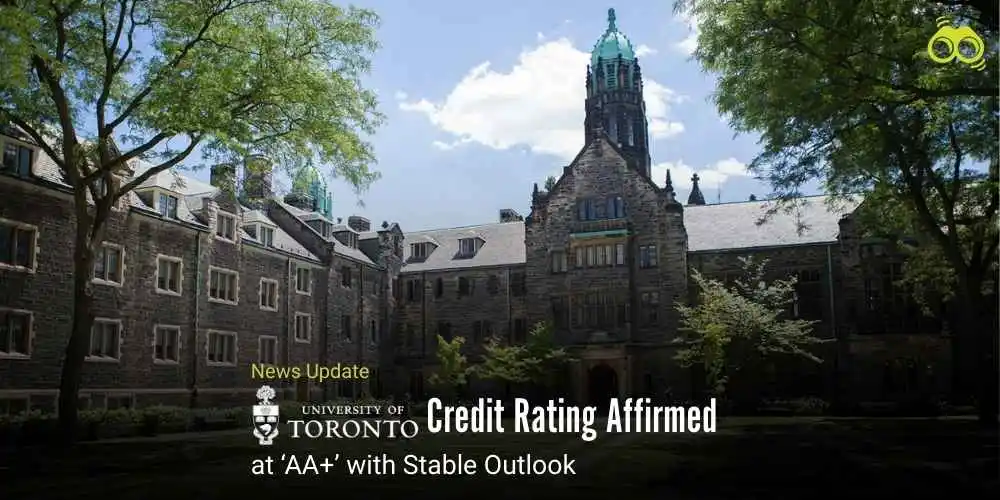Parents and Community Join Civil Rights Education Event in PG County
Mount Rainier Elementary Commemorates Ruby Bridges with Walk and History Lesson
Sixty-five years after Ruby Bridges became the first Black child to attend an all-white elementary school in New Orleans, her legacy was honoured in November. The civil rights icon, who in 1960 showed incredible strength when U.S. Marshals escorted her to William Frantz Elementary, remains a powerful symbol in the ongoing fight for equal education. In Prince George's County, Maryland, children and families recently gathered for a walk to school at Mount Rainier Elementary to commemorate her historic act.
On November 14, dozens of children walked down the sidewalk toward Mount Rainier Elementary School with their parents and local leaders, sealing that moment in civil rights history through this walk. It signified one of hundreds of similar events around the United States on each November 14 under the Ruby Bridges Foundation. Organisers say that the idea was to keep Bridges's story alive and keep advocating for schools to learn about civil rights education in significant ways.
Principal Jocelyn Price said children never should, with the passage of time, forget their right to attend school. As she noted, Ruby Bridges' story is still powerful and should be told over and over again to not have it forgotten through the years. To enforce that, teachers at Mount Rainier Elementary scheduled a county school history lesson where students engaged in discussion about Bridges' experience and why it remains relevant today.
Parents also praised the event, and so Ryan McGranaghan, whose daughter attends the school, said, has really been a celebration of community and breaking down walls that have existed for decades. He further remarked that education did not only happen in classrooms but was experienced as being part of a diverse living environment. Hence, the parents and entire community have a special role in civil rights education. Price further concluded her arguments with the statement that her school, Wisconsin, was an expression of diversity working together. It meant a lot to her personally because she is a woman of colour to know that diversity and inclusion mattered in education to these children in the institution. She described the walk as a way of showing children that their school is a safe and welcoming place for all.
This event held symbolism and pragmatic relevance. According to organisers, walking to school activities drive safe and healthy activity for children globally, but are at the same time intended to put a thought in them on civil rights history. Some small grants are given to schools across the country from the Ruby Bridges Foundation for support during these celebrations, termed as spiffy combinations of physical activity with lessons on equality and kindness.
In a nutshell, the Ruby Bridges Foundation uses the above-quoted annual walk to inspire communities to come together in contemplation and action. Children typically wear purple shirts as symbols of unity and inclusion, while schools combine the walk with their assemblies, classroom discussions, or creative works. Thus, it is both a commemoration and a teaching tool. At seventy-one years old, Ruby Bridges says, as quoted from her foundation's site, "Racism is a grown-up disease, let's stop using our kids to spread it." Thus, this inspires schools all over the nation and continues the celebrations of the civil rights of PG County, in which many children again remind themselves of the long-lasting impacts imposed by civil rights pioneers.
This walk was part of an ongoing wider conversation concerning Ruby Bridges and how civil rights education in schools shapes perceptions among newer generations. Teachers from Mount Rainier Elementary explained that teaching those lessons was of the essence as new questions came up in students' minds whenever Bridges' experience was brought to consideration. Brightening the Future. Organisers stated that the Ruby Bridges Foundation will continue urging schools to teach civil rights even past the walk every year. Projects, discussions, and initiatives led by students are then touted as possible conduits for ensuring Bridges's legacy lives on for future generations. In the meantime, educationists in Prince George's County were on board with that plan, which will integrate even more lessons on diversity and inclusion into the curriculum going forward to reiterate equal standing in that socioeconomic education.
In summary, the Civil Rights Walk in Prince George's County stood as a tribute to the valour of Ruby Bridges and a reminder of how far they have come since 1960. Pairing the symbolic walk with classroom learning highlighted how communities were able to come together to teach children about history, equality, and the value of diversity. For many parents, teachers, and pupils, the walk was not only about remembrance but also about shaping a more inclusive future.
Editor’s Note:
Civil rights walkslike the one just completed in Prince George's County, were not designed only to be symbolic gestures but are live reminders of the quest for equality in education and society. They allow communities to trace the steps of pioneers like Ruby Bridges and reflect on the courage it took to stand up against injustice and the strides made since that historical time. The walks matter because they involve a connection from historical events to present-day occurrences. They, the walks, remind children that school should be theirs to attend, free and safe, as well as teaching diversity and inclusion as everyday values. In this way, lessons from the Civil Rights Movement may be passed on to younger generations instead of being wasted by forgetting them in history. The civil rights march attests to unity, strength, and shared responsibility. It illustrates how parents, teachers, and other community leaders work together to provide environments where equality is lauded and obstacles shattered in its wake. Besides, walks here serve to underscore the right to an education as a promise to build stronger and inclusive communities. These reflections are dedicated to a vision of societal mobilisation that demands both justice and opportunity, while also honouring the sheer bravery of figures such as the Freedom Riders, Audrey F. Cohen, and Fanny Jackson Coppin.
Skoobuzz underlines that these movements serve as a reminder that civil rights are not merely a chapter in history but an ongoing effort to ensure dignity and justice for everyone.
FAQs
1. Who was Ruby Bridges, and why is she remembered?
Ruby Bridges was six years old in 1960 when she became the first Black child to attend an all‑white elementary school in New Orleans. Escorted by U.S. Marshals to William Frantz Elementary, her bravery became a defining moment in the Civil Rights Movement.
2. What event took place in Prince George’s County to honour Ruby Bridges?
Children and families in Prince George’s County, Maryland, joined a walk‑to‑school event at Mount Rainier Elementary to commemorate Ruby Bridges’ courage and highlight the importance of equality in education.
3. When was the walk held and who organised it?
The walk was held on 14 November as part of hundreds of similar events across the United States. It was organised under the sponsorship of the Ruby Bridges Foundation, which encourages schools to mark the anniversary each year.
4. Why are civil rights walks important for schools and communities?
Civil rights walks remind children of their right to education, connect history with the present, and encourage communities to reflect on diversity and inclusion. They also serve as teaching tools for civil rights education in schools.
5. What role did Mount Rainier Elementary play in the event?
Teachers at Mount Rainier Elementary scheduled a county school history lesson to discuss Ruby Bridges’ story. Principal Jocelyn Price explained that the walk and classroom discussions ensured pupils understood why civil rights history continues to matter.
6. How did parents and community members respond to the walk?
Parents praised the event as a celebration of community and overcoming barriers. They emphasised that education extends beyond the classroom, with parents and community playing a vital role in civil rights education.
7. What message did Principal Jocelyn Price share?
She stated that children should never forget their right to attend school. As a woman of colour, she highlighted the importance of teaching diversity and inclusion, describing the walk as a way of showing pupils that their school is safe and welcoming.
8. What wider impact does the Ruby Bridges Foundation aim to achieve?
The Foundation encourages schools to continue civil rights education beyond the annual walk. It promotes projects, discussions, and student‑led initiatives to ensure Ruby Bridges’ legacy remains relevant for future generations.
9. What symbolic elements are part of Ruby Bridges Walk to School Day?
Children often wear purple shirts to symbolise unity and inclusion. Schools combine the walk with assemblies, creative projects, and classroom discussions, making the initiative both a commemoration and a teaching tool.
10. What is Ruby Bridges’ message today?
Ruby Bridges, now seventy‑one, has said: “Racism is a grown‑up disease; let’s stop using our kids to spread it.” Her words continue to inspire schools across the United States, including those in Prince George’s County.














0 Comments (Please Login To Continue)